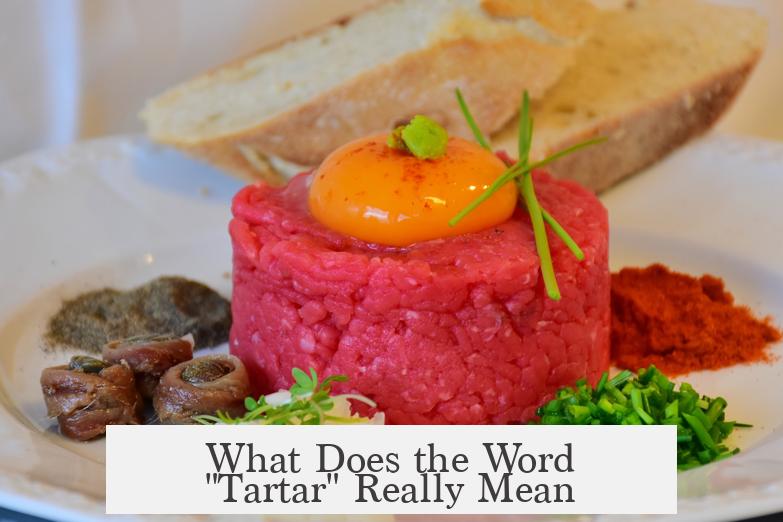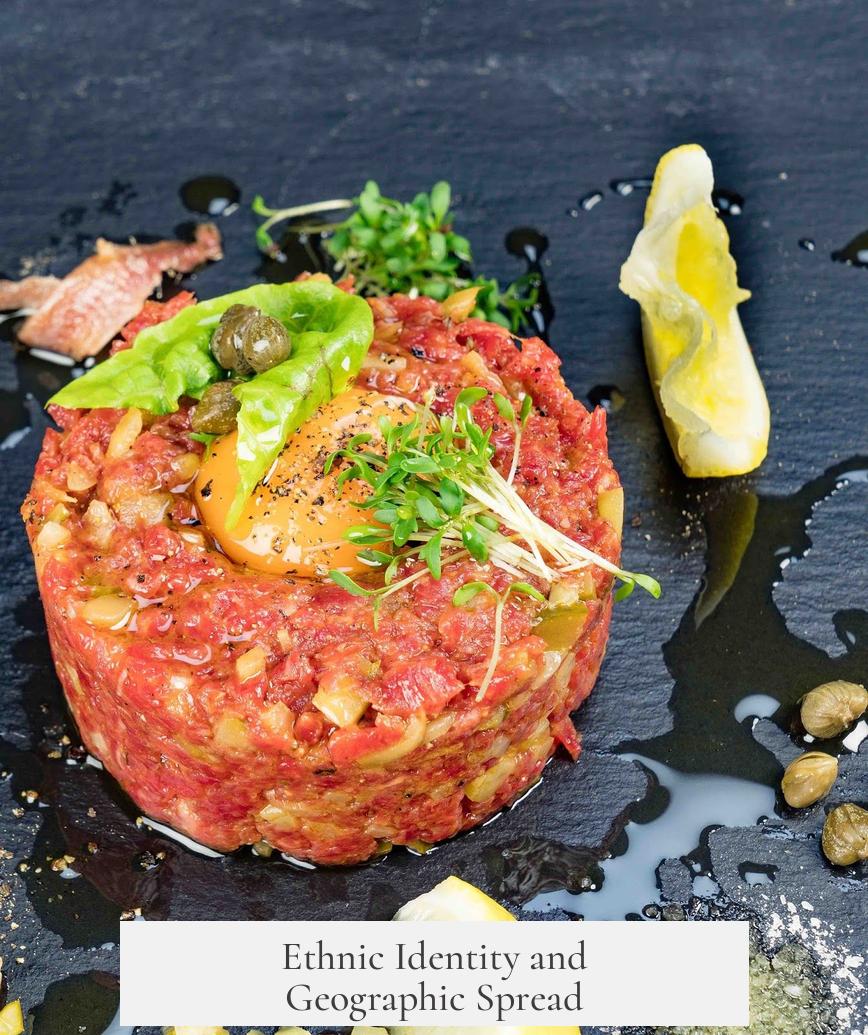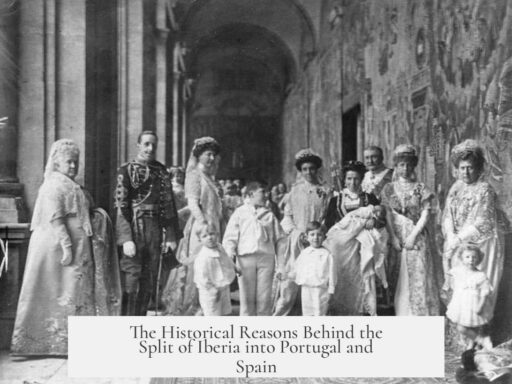The word “Tartar” primarily denotes ethnic groups linked to the Mongol Empire and successor states like the Golden Horde. It broadly includes Mongol and Turkic peoples from the Eurasian steppe, spanning from the Caucasus to China. The term commonly appears to describe these groups’ heritage and cultural identity.
The “Tartars” are ethnically related to Turks. The word is not inherently offensive in many contexts, particularly in the United States, where it is often synonymous or preferable to the term “Mongol” when identifying these peoples. Its use focuses primarily on historical and ethnic references rather than derogatory implications.
Nevertheless, “Tartar” can carry negative connotations in some regions or contexts. Similar to “Eskimo,” which is seen as derogatory in Canada but not in the U.S., “Tartar” might be viewed as inappropriate or outdated elsewhere. Historically, Western literature in the 19th and early 20th centuries often portrayed “Tartars” negatively, linking their presence to notions of brutality or autocracy in Russian culture. Such stereotypes reflected prejudiced pseudoscientific beliefs prevalent at the time.
Today, academic and modern linguistic usage tends to avoid those biases. Contemporary works use “Tartar” neutrally or within accurate cultural and historical frameworks, steering clear of old racial assumptions. The term now serves more as a descriptive ethnic identifier within Eurasian studies than as a slur or stereotype.
| Aspect | Details |
|---|---|
| Ethnic Groups | Mongol Empire peoples; Turkic and Mongol steppe inhabitants |
| Geography | Steppe region between Caucasus and China |
| Connotation | Neutral to slightly negative historically; mostly neutral now |
| Modern Usage | Academic and ethnic identification; avoids derogatory use |
- “Tartar” is an ethnic label tied to Mongol and Turkic peoples from Eurasian steppes.
- It carries historical stereotyping but is mostly neutral in current use.
- Modern scholarship uses the term carefully, avoiding outdated racial biases.
- Its acceptability varies by region and context.
What Does the Word “Tartar” Really Mean?

In its essence, “Tartar” refers to the ethnic groups that formed the backbone of the Mongol Empire and some of the states like the Golden Horde that followed. This term doesn’t just pop up from nowhere; it carries rich historical and cultural weight. Let’s dive into what it means, where it comes from, and why it matters today.
First things first, when someone says “Tartar,” they’re often pointing to the peoples closely related to the Turks, living in the vast, windy steppes stretching between the Caucasus Mountains and China. Imagine endless grasslands, horseback riders, and centuries of history. In simple terms, Tartars represent an ethnic identity tied to a powerful past and a sprawling geography.
Interestingly, in the United States, “Tartar” has become a catch-all term for various Mongol and Turkic groups in that region. It’s not usually a bad word or an insult—far from it. It’s a name to recognize an ethnic lineage, much like calling someone Irish or Italian.
The Mongol Empire Connection
Why the Mongol Empire? Well, the Mongol Empire, established by Genghis Khan in the early 13th century, was one of the largest empires in history, stretching from Eastern Europe across Asia. Its army included many ethnic groups, including the Tartars. The Golden Horde, a political entity that emerged after the empire’s fragmentation, was predominantly Tartar.
Using “Tartar” to describe these groups is sometimes more precise and respectful than just saying “Mongol.” The Mongol Empire was vast and diverse, but the Tartars had distinct cultures and identities within it. Calling them “Mongols” lumps everyone in, but saying “Tartars” pinpoints a specific ethnic and cultural group with its own history.
Ethnic Identity and Geographic Spread

The Tartars aren’t just a footnote in history; they live on today, especially in regions like Tatarstan—a republic within modern Russia. Their language, traditions, and way of life persist, often blending Turkic and Mongolic traits.
Geographically, the Tartars historically inhabited the wide grasslands or steppes that stretch from the eastern edges of Europe right into China. This vast area made them nomadic, skilled horsemen, and fierce warriors, blending cultures as they traveled and ruled.
Not Just a Name—But Sometimes a Loaded One
Here’s where things get tricky. Although “Tartar” is mostly neutral and descriptive, it’s not immune to negative connotations. In the past, Western literature sometimes painted Tartars in a less flattering light. Books from the 19th and early 20th centuries might say the Russian people were brutal or autocratic because of their “Tartar blood” and influence. This idea was part of a broader stereotype linking certain ethnic groups to negative traits—a classic case of oversimplification with a dash of prejudice.
Moreover, the term “Tartar,” like “Mongol,” has acquired some outdated and offensive undertones in other contexts—think of “Mongoloid,” which was once a medical term but became unfairly stigmatizing. Just as “Eskimo” is considered offensive in Canada but not so much in the U.S., “Tartar” might cause offense depending on where you are and how it’s used.
Today, however, modern scholars and writers tend to use “Tartar” objectively, without falling into those old, biased views. Academic research focuses on history, language, and culture rather than racial hierarchies or stereotypes. The shift reflects a broader change in how we approach ethnic history—less judgment, more understanding.
Why Should You Care About Tartars?

Good question! Knowing about the Tartars offers a window into world history, where alliances, empires, and cultures collided on a massive scale. Their legacy isn’t confined to dusty history books—it shapes regions in Russia, Central Asia, and beyond.
Plus, understanding the term’s nuances helps avoid confusion or offense. Using “Tartar” thoughtfully can show respect for the group’s unique heritage and avoid repeating old stereotypes.
How to Use the Word “Tartar” Correctly Today
- When referring to the ethnic group, use “Tartar” or “Tatar”—both are common, but “Tatar” tends to be used in official names, like Tatarstan.
- Remember it’s a respectful ethnic identification, not a slur. Nowadays, it’s better to avoid casual or pejorative usage.
- In historical contexts, recognizing additional layers like the Golden Horde or the Mongol Empire helps clarify meaning.
So next time you hear “Tartar,” think beyond the word. Picture centuries of culture, fierce riders across the steppes, and a people who shaped the destiny of Eurasia. It’s a term packed with history, not just a simple label.
Summary: What Does “Tartar” Mean?
“Tartar” is the name for ethnic groups linked to the Mongol Empire and Turkic peoples from the vast Eurasian steppe between the Caucasus and China. It’s historically rich, tied to empires like the Golden Horde, and best used respectfully. While it carried old stereotypes in Western literature, it’s now mainly a neutral or academic term. The Tartars remain a proud ethnic group with a lasting cultural footprint.
In a world where words can carry heavy baggage, “Tartar” stands out as a word that deserves a second look—full of historical depth and cultural identity. Next time you read about Tartars, remember you’re stepping into a story that stretches across centuries and continents.



